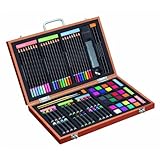Classroom Picture a Day, Time Lapse Photography
|
resources index > lesson plans > PICTURE A DAY |
Time-lapse photography equipment permits recording scenes / events over a long period of time and play back in a much shorter period, allowing the human brain to assimilate the changes.
Eadweard Muybridge used a series of cameras to capture the motion of people and animals, his innovation lead to the development of motion pictures. Before Muybridge's cameras there were devices called ‘zoetropes’ and ‘praxinoscopics’ that also used the same principles of optical illusions for ‘motion pictures’, and then there are flip books of individual pictures that blend into movement as the pages are flipped.
Time lapse equipment is expensive but process can be mimicked with a regular or digital camera, and while the idea of taking a single picture on a rigous schedule is daunting, the rewards are considerable for creating teachable moments that are otherwise lost. Years ago, as a child, I was fascinated by a LIFE magazine story of a father and daughter who had a picture of them together taken on her birthday for years. The experience of examining the changes in the two people provoked thoughts on togetherness, changes to our bodies as a child matures and a parent ages, the changes in our relationships with one another- I even wanted to know about who had taken each picture and were other pictures taken at the same time? Another photography project that fascinated me was providing children with disposable cameras and the resulting snapshots of the world as they saw it - their eye level, their interests. The same idea has been used to provide insights into the lives of the homeless. Themes to consider - subjects, time of day, frequency -
With more elaborate video equipment a fast event can be slowed down. . . a match striking, a water balloon breaking. Montessori classrooms introduce time concepts (year and month) with birthday celebrations where the child walks in a circle around a candle or representation of the sun, while holding a globe. |
||||
|
|
||||
|
NPW home | Global PathMarker Collection | APWTW Blog | faqs-about | contact | search | privacy |
|
NetPosterWorks.com ©2007-2015 The Creative Process, LLC All Rights Reserved. |
last updated







